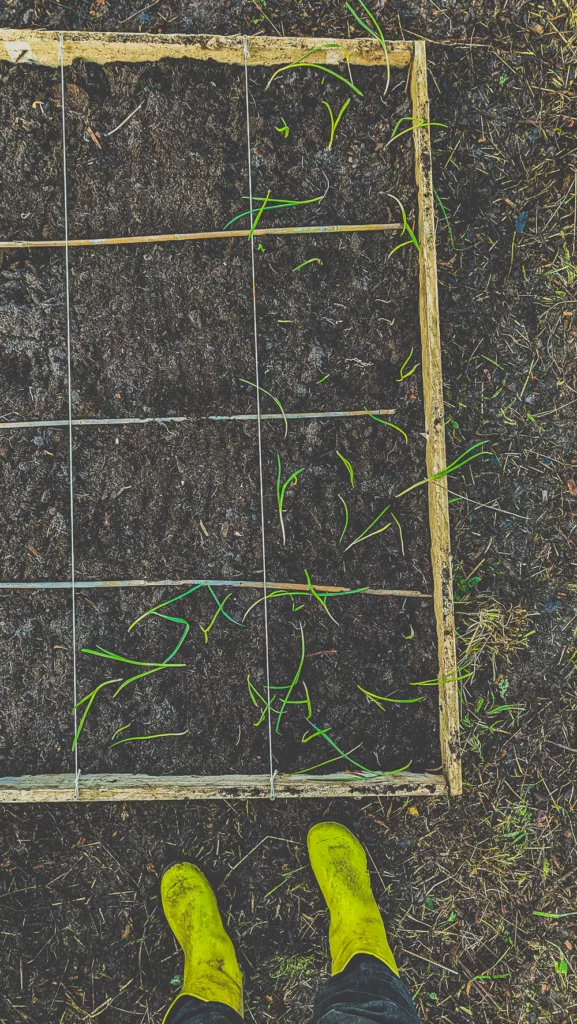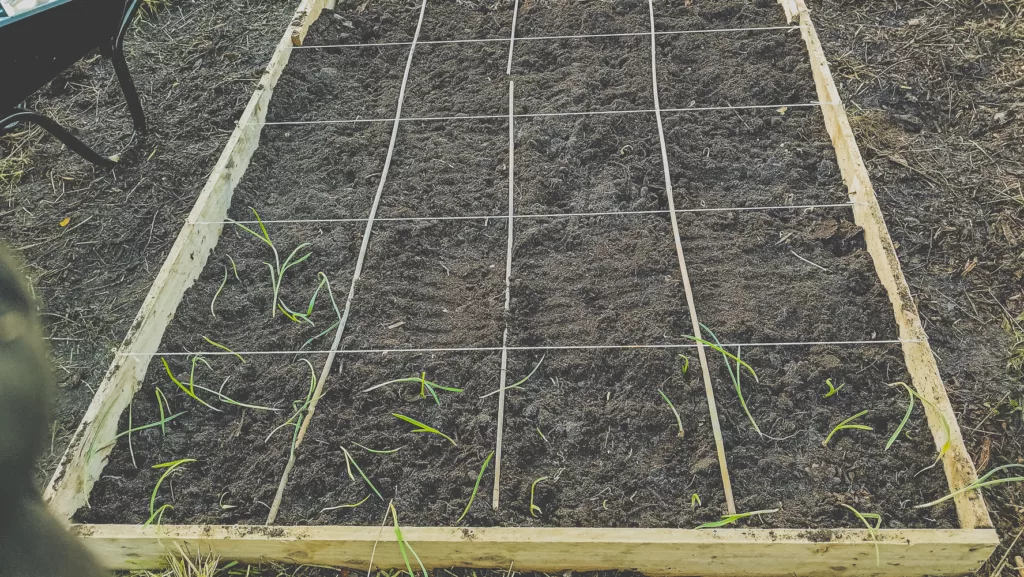How To Fill Raised Beds: The Easy Way To Grow Nutritious Vegetables (with Soil Calculator)
Just a heads up, this post contains some affiliate links. That means that we earn a small commission if you buy the product at no extra cost to you. That allows us to continue to research and share interesting articles with you. :)

A raised garden bed is a perfect way to grow your vegetables, herbs, and flowers, but before planting, you need to fill your raised bed with the right type of soil.
This blog post will teach you everything you need to know about how to fill raised beds, including why you should use raised beds, what type of soil to use, and how much soil you’ll need.
Why Use Raised Beds?
If you want to start a raised bed garden, you’re in for a treat! Not only are raised beds incredibly easy to set up and maintain, but they also offer several benefits over traditional gardening.
For one, raised beds allow you to control better the quality of your soil, which is essential for healthy plants. They also make keeping your plants evenly watered and free from weeds easier. And last but not least, raised beds can give your plants the extra drainage and aeration they need to thrive.
Filling Your Raised Beds: A Quick Guide
When filling a raised bed to grow vegetables, it’s essential to use the right soil type. Raised beds are usually filled with soil, compost, and other organic matter to create a nutrient-rich environment for plants to thrive.
Here’s a quick guide for filling a raised bed:
- Start by removing any grass or weeds from the area where the raised bed will be located. This will help to prevent these plants from invading your new bed and competing with your vegetables for nutrients.
- Measure the dimensions of the raised bed to figure out how much soil you will need to fill it. As a general rule of thumb: don’t make your bed more than 4 feet (1.2 meters) across -your length will vary. as an example, our allotment beds are 4 feet by 10 feet (1.2m by 3m) at a depth of about 8 inches (20cm) and it takes 200L of compost on top of roughly 600L of another filling material (we use mulch).
- Mix together the soil, compost, and other organic matter that you will use to fill the bed. A good mix to use is 1/3 soil, 1/3 compost, and 1/3 of other materials like peat moss, vermiculite, or coarse sand.
- Once the soil mix is ready, start filling the raised bed. Tamp down the soil as you go to eliminate any large air pockets. Your bed should be filled about the level to the top of the bed.
- Once the bed is filled, give it a good watering. This helps to settle the soil and to encourage the microorganisms in the soil to start breaking down the organic matter and creating a nutrient-rich environment for your plants.
- You can now plant your vegetables! Make sure to space them out correctly according to their recommended spacing and to amend the soil with fertilizer if necessary to ensure a good yield.
This video shows you how we made our allotment raised beds out of old pallet wood!
Can You Use Top Soil To Fill Raised Beds
One of the most common questions we hear in the gardening world is whether or not you can use topsoil to fill raised beds.
According to horticultural experts, using topsoil in raised beds can be suitable for growing vegetables. Topsoil, also known as subsoil, is the uppermost soil layer, typically rich in organic matter and microorganisms. This makes it suitable for providing plants with the necessary nutrients and moisture to grow.

However, it is important to note that not all topsoil is of equal quality. Some topsoil may lack essential nutrients and need to be amended with organic matter or fertilizers. Additionally, topsoil can also be heavy in clay content or may have poor drainage, leading to waterlogged soil and poor plant growth.
Mix topsoil with other soil components such as compost, peat moss or vermiculite to create a well-draining and nutrient-rich soil mixture for optimal results. A commonly used mixture is one part topsoil, one part compost, and one part other soil components.
When using topsoil to fill raised beds, it is also essential to ensure that the soil pH level is within the acceptable range for the particular vegetables you will be growing.
The pH level can be easily tested using commercially available test kits and adjusted accordingly if necessary.
In summary, topsoil can be an acceptable option for use in raised beds for growing vegetables as long as it is of good quality and properly amended with other soil components to improve drainage and nutrient content.
Where To Get Soil For Raised Beds
Start a raised bed from scratch; you’ll need to fill it with soil. The type of soil you use is important for the health of your plants. You can buy bags of soil at a garden centre or nursery or get it delivered. If you have access to a truck, you can also buy it in bulk.
How Many Bags Of Soil Do I Need For A 4X8 Raised Bed?

To figure out how many bags of soil you’ll need to fill a 4×8 (1.2×2.4 meter) raised bed, first determine the cubic footage of your bed. To do that, multiply the length (4 feet or 1.2m) by the width (8 feet or 2.4m), and then by the depth (for ease of working out, we’ll go with 1 foot or 12 inches, which is 30cm).
This will give you 32 cubic feet (or 0.9 cubic metres). It may be easier to use a cubic-foot calculator to work this out. Now that you know the cubic footage of your raised bed, you can calculate how many bags of soil you’ll need to fill it.
In the US, compost or soil is usually sold in stores like Lowes or Home Depot in bags of 1-2 cubic feet. For a 4×8 raised bed, you’ll need between 16-32 bags of soil (1-2 cubic feet per bag). One cubic yard of soil (27 cubic feet) will be approximately 14-27 bags (1-2 cubic feet per bag).
In the UK, the compost and soil you need to fill raised beds are usually sold by the litre, and common sizes vary by shop. You’ll need to work out how big your bed is in metres cubed and how many litres of soil or compost you’ll need per metre cubed.
A 4-foot by 8-foot raised bed works out to roughly 1.2m by 2.4m, and for ease, we’ll use a depth of 30cm (0.3m). This works out to 0.9m cubed; because the metric system is easier to work out, this is 900 litres.
Raised Bed Filling Calculators
The following app will help you determine how many bags of compost you need to fill raised beds of any size. Enter your sizes below and hit calculate, and we’ll work out how many bags you’ll need.
If you are only using compost for your top layer, you can work this out by changing the depth of filling. Usually, you’ll use compost on the top two inches (5cm or 0.05m on our calculator).
Metric Raised Bed Calculator (Metres)
A Quick Example Calculation:
For a 3m by 2m raised bed you will need about 1800.00 litres of compost (or other filling material), or approximately 72 bags of 25 litres each.
Imperial Raised Bed Calculator (feet and inches)
Limitations: These apps currently work only on bags of equal size and do round up, so you may be left with slightly more soil or compost than you need to fill raised beds in your garden or at your allotment.
Mixed Measurements
If you’re like us, you tend to mix your measurements between metric and imperial. We do square-foot gardening, and our raised beds are measured in feet, but we buy compost in litres (yep, it gets confusing!).
The calculator below will save you the headache of figuring out how many bags of compost you’ll need to fill a raised bed in that situation!
*coming soon*

Common Raised Beds Questions
What type of soil should I use?
A good soil mix for raised beds combines topsoil, compost, and other organic matter like peat moss, vermiculite, or coarse sand. These ingredients provide a balance of nutrients and good drainage for plants.
How deep should I fill a raised bed?
A general rule of thumb is to fill the raised bed with about 10-12 inches of soil mix. This depth is deep enough to support most vegetables while still being shallow enough to allow roots to penetrate the soil easily.
As a side note, you can fill the bottom 10 inches or so with other filling materials (mulch, wood chips, leaf mould, etc) and fill just the top two with compost. This will reduce your costs significantly.
How much soil do I need to fill raised beds in my garden?
To determine how much soil you will need to fill a raised bed, you can measure the dimensions of the bed and use a soil calculator to estimate the volume of soil required.
Alternatively, you can use the rule of thumb of 1 cubic yard of soil (765L) for every 100 (9.3m squared) square foot of bed space.
Should I add fertilizer or other amendments to the soil when I fill raised beds?
If you have good quality compost, it should have enough nutrients for your plants. If you want to ensure that your plants receive a balanced diet, you can add a slow-release fertilizer to the soil when filling the raised bed.

Final Thoughts
When starting, ensure you fill raised beds in your garden or allotment the right way; there are key things to remember that can make or break your vegetable gardening. First, ensure your bed’s location is in an area with plenty of sun and is easily accessible. Secondly, fill your bed with high-quality soil or compost and make sure it is well-drained.
Finally, choose the right plants for your space and water them regularly. By following these simple tips, you will be on your way to growing a healthy and bountiful garden!
Back To The Good Life is a participant in the Amazon Services LLC Associates Program, an affiliate advertising program designed to provide a means for sites to earn advertising fees by advertising and linking to Amazon.com. We also participate in other affiliate programs which compensate us for referring traffic.







